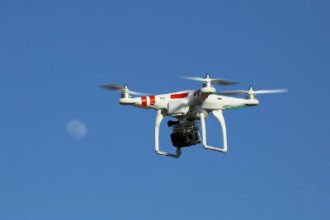Copyright © 2009 James Taylor. Visit the original article at Getting to Enterprise Application 2.0.
On Monday I posted about Enterprise Application 2.0 and promised to return with some thoughts on how to get from Enterprise Application 1.0 to Enterprise Application 2.0. Let’s see:
- Expose core elements as services
- Identify and manage processes – hook up legacy and new services into new, more effective workflows
- Find and automate decisions using business rules
- Manage simple events and correlate them into more complex, more meaningful ones
- Empower business users to manage rules
- Use RIA mashups to bring various interface elements together
- Establish ongoing decision analysis
- Apply analytics to optimize decisions
- Adopt experimentation and adaptive control
Much of this is pretty standard, so let’s focus on the items missing from many legacy modernization checklists:
- Find and automate decisions using business rules
The essence of decision management is the identification and management of operational decisions. These high-volume, transactional decisions are typically not handled well by Enterprise Application 1.0. Identifying them explicitly, cataloging them and …
Copyright © 2009 James Taylor. Visit the original article at Getting to Enterprise Application 2.0.
On Monday I posted about Enterprise Application 2.0 and promised to return with some thoughts on how to get from Enterprise Application 1.0 to Enterprise Application 2.0. Let’s see:
- Expose core elements as services
- Identify and manage processes – hook up legacy and new services into new, more effective workflows
- Find and automate decisions using business rules
- Manage simple events and correlate them into more complex, more meaningful ones
- Empower business users to manage rules
- Use RIA mashups to bring various interface elements together
- Establish ongoing decision analysis
- Apply analytics to optimize decisions
- Adopt experimentation and adaptive control
Much of this is pretty standard, so let’s focus on the items missing from many legacy modernization checklists:
- Find and automate decisions using business rules
The essence of decision management is the identification and management of operational decisions. These high-volume, transactional decisions are typically not handled well by Enterprise Application 1.0. Identifying them explicitly, cataloging them and describing them using declarative business rules makes it possible to do much better. In a 1.0 world they could be:- Handled inconsistently (each systems does it differently, so the website offers a different price from the person in the call center for instance)
- Handled manually (every transaction is put on someone’s worklist and left there until they come along and make a decision)
- Handled only at a macro level (everyone is treated the same so no decision is really made at all, so all customers get the same cross-sell offer for instance)
- Ignored (an opportunity to make a business decision is missed completely)
- Empower business users to manage rules
Business users don’t want to manage rules any more than they want to write code. But if they can do those things as a side-effect of running their business then the systems will be more accurate, more current and more effective. Using technology like a Business Rules Management System allows for this kind of environment and brings IT and business people closer together. - Establish ongoing process and decision analysis
Most organizations automating processes realize that they need to do some ongoing analysis of how well the process runs and that process management is something ongoing not a once-and-done project. This is even more true of decision management. The best way to make a decision changes all the time because regulations do, because competitors do, because consumer expectations and preferences do and for many other reasons. Combining ongoing analysis of the effectiveness of decisions with business user empowerment makes it possible for Enterprise Application 2.0 to stay current and to ensure it keeps making good decisions. - Apply analytics to optimize decisions
Talking of good decisions, we need to make sure that we are putting our data to work in Enterprise Application 2.0. Using analytics (data mining and predictive analytics particularly) as part of our decision making is crucial. These techniques turn uncertainty about the future into usable probabilities and allow our applications to learn from all the data they collect. While these techniques can be used directly on processes and on event processing, they add the most value when applied to decision making. Analytics can turn all that historical data about what worked and what did not into something your decisions can really use so that future decisions are informed by the past. - Adopt experimentation and adaptive control
Last but by no means least we must have applications that help us manage uncertainty by letting us experiment and compare alternatives (adaptive control or champion/challenger). Even with the best analytics we cannot always tell what the best choice would be so we need to be able to experiment – to try several different choices and compare their effectiveness. It is not enough to do this in marketing or on a website (where it is often called A/B testing), it must be extended to core decisions. To find the best price, or the best offer collections strategy we must be able to compare the effectiveness of several different approaches.
Recapping the earlier post, let’s consider how we deliver the key elements of Enterprise Application 2.0:
- Agile and transparent
Because the core logic of our business – the decision making – is managed and exposed in a business-friendly format using business rules our decisions are more transparent. Because business people can see how well the decisions are working and make changes directly when they are not our systems and processes are more agile. - Empowers a flat organization
Instead of referring and escalating decisions, putting them on a manager’s worklist, systems and processes make decisions so that front-line staff can take appropriate actions. Empowered staff must be given the options that are legal and shown what is likely to work and automating decisions enables this. With formal management and analysis of decisions, management can be sure how decisions are being made. - Uses the data it accumulates to act analytically
Organizations collect data in part to make better decisions. Applying decision management to operational decisions makes it possible to analytically enhance the decisions in day to day transactions, not just the executive suite.
And there you have it. Don’t forget I have a proposal in to speak at the Enterprise 2.0 conference and they have voting set up on their home page (http://www.e2conf.com/sanfrancisco/index.php). If you can grind through and find my proposal on Page 8 of 16 and then vote for it, I would appreciate it!






